The Kuiper Belt is a donut-shaped structure from the outer Solar System. It extends from the orbit of Neptune, at 30-50 AU from the Sun. One AU is the distance between Earth and the Sun.
Key Facts & Summary
- The Kuiper Belt is one of the most significant regions in our Solar System amongst the Oort Cloud, the heliosphere, and Jupiter's magnetosphere.
- The Kuiper Belt resembles the Asteroid Belt, but it is 20 times more comprehensive and up to 20-100 times more massive.
- The Kuiper Belt and the Asteroid belt are old residues from the Solar System's formation.
- It is believed that the main body of the Kuiper Belts has more than a trillion comet nuclei.
- The most prominent objects in the Kuiper Belt are Pluto, Quaoar, Makemake, Haumea, Ixion, and Varuna. They are also called Trans-Neptunian Objects.
- It is believed that the Kuiper Belt and the Oort Cloud are the major sources of comets.
- The ices in the Kuiper Belt predate the Solar System's formation, which hints at the solar nebula's existence.
- The Kuiper Belt has hundreds of thousands of icy figures that are either tiny chunks or can be as big as 100 kilometers / 62 miles across.
- The most prominent object in the Kuiper Belt is the well-known planet, Pluto. Being part of the Kuiper Belt, Pluto was reestablished as a "dwarf planet" in 2006.
- A planet more massive than Pluto was found in the Kuiper Belt, namely Eris, another dwarf planet.
- Scientists said that the entire mass of the Kuiper Belt is less than 2% of Earth.
- The Kuiper Belt was firstly visited in 1983 by NASA's Pioneer 10 spacecraft. Another visit was made in 2015 by NASA's New Horizons spacecraft.
The Kuiper Belt For Kids
The Kuiper Belt is a comet-rich area which is situated between 30 to 50 AU from the Sun. One AU is the distance from the Earth to the Sun, and as such, the Kuiper Belt is rather enormous.
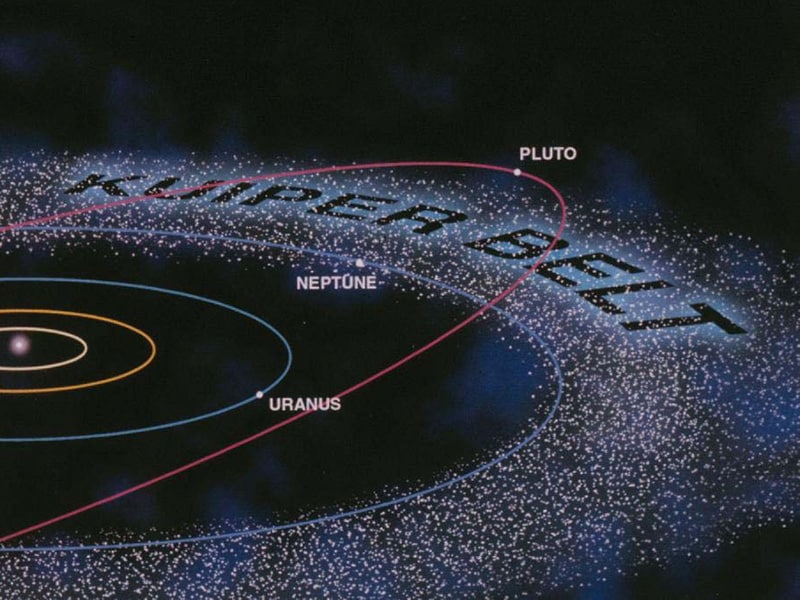
The Kuiper Belt contains millions of comet nuclei, and it is similar to the theoretical Oort Cloud. In the Kuiper Belt, the dwarf planet Pluto was first discovered.
What is the Kuiper Belt and Where is it Located?
The Kuiper Belt is a disk-shaped region situated in the outer Solar System, which is past Neptune's orbit. Its inner edge starts from Neptune's orbit (30 AU from the Sun), and the outer edge goes to nearly 1.000 AU. Neptune is the farthest planet from the Sun, and as such, the Kuiper Belt is very far away from us.
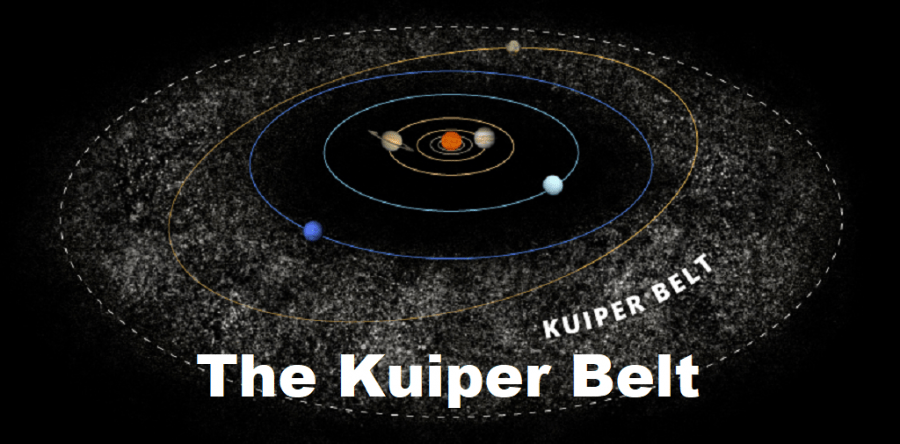
What Planets Are in the Kuiper Belt?
In the Kuiper Belt, we can find the dwarf planets Pluto, Haumea, and Makemake. Pluto was discovered in 1930, which further led to the discovery of Trans-Neptunian objects. Pluto was thus the first discovered object beyond Neptune. Frederick Leonard indicated that there are a lot of objects beyond Pluto that needs our attention.
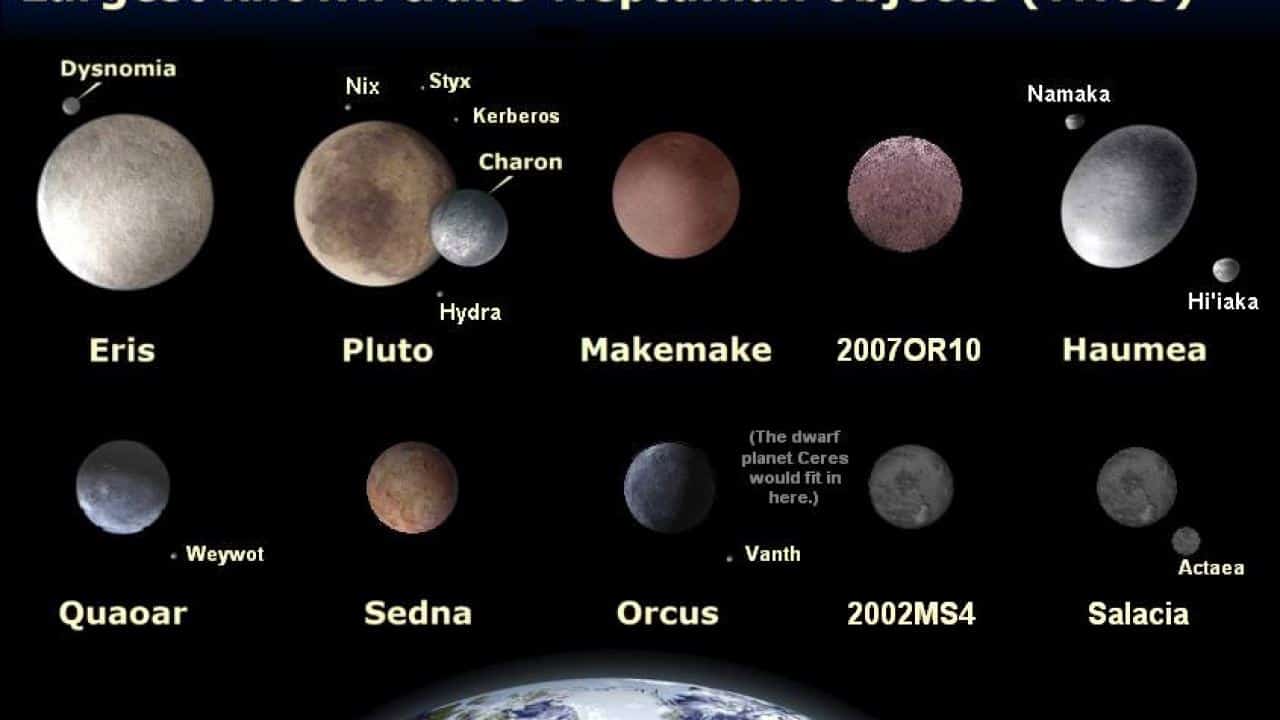
It is also believed that other moons of the Solar System have originated from the Kuiper Belt – Neptune's Triton and Saturn's moon Phoebe, which may actually be captured objects from the Kuiper Belt.
Why is the Kuiper Belt Important?
It is believed that Kuiper Belt objects are primitive leftovers from when the Solar System was created. Some of the remains condensed into major planets millions of years ago.
Also, scientists say that Kuiper Belt is the source of the short-period comets. The Belt acts like a pond for short-period comets, similar to how the Oort Cloud acts as a reservoir for the long-period comets.
Fun Kids Facts About the Kuiper Belt
- In 2005, scientists noticed a more massive object than Pluto in the Kuiper Belt – Xena (after the famous warrior princess), later on, named Eris. Eris is twice as far from the Sun, and it has its own satellite called Dysnomia.
- The Kuiper Belt is big and mysterious, but you can spot objects within it. : icy items, dwarf planets, comets, and dust.
- About 100 million small objects are estimated to exist within the Kuiper Belt
- The Kuiper belt got its name after the astronomer Gerard Kuiper, although he did not anticipate its existence. Albion further discovers in 1993 the first Kuiper Belt objects, apart from Charon and Pluto.
Size and Comparison
The Kuiper Belt is a donut-shaped region beyond Neptune that extends from 30 to 50 AU or more from the Sun. The Kuiper Belt and the Asteroid Belt are very much alike, but the Kuiper Belt is much broader and contains more comets.
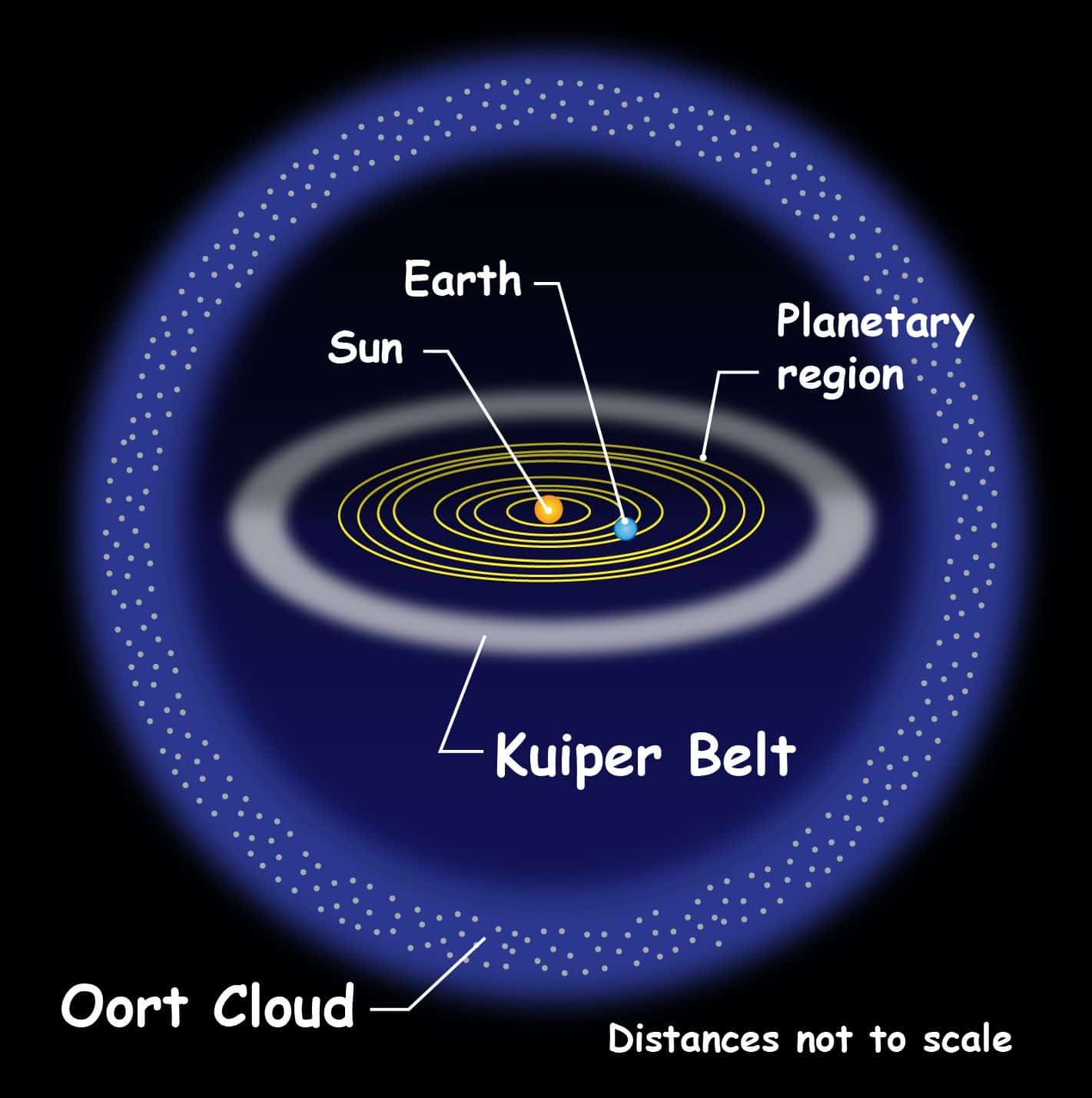
Compared to Earth, which has a circumference of 24,901.45 miles, it is way bigger. The distance among objects within the asteroid belt is 24 times the circumference of Earth.
Trivia
How many Objects are in the Kuiper Belt?
It is speculated that there are approximately 35.000 Kuiper Belt objects larger than 100 km / 62 mi in diameter. The Kuiper Belt also consists of larger celestial objects such as Eris, Pluto, Makemake, Haumea, Quaoar, and other smaller figures.
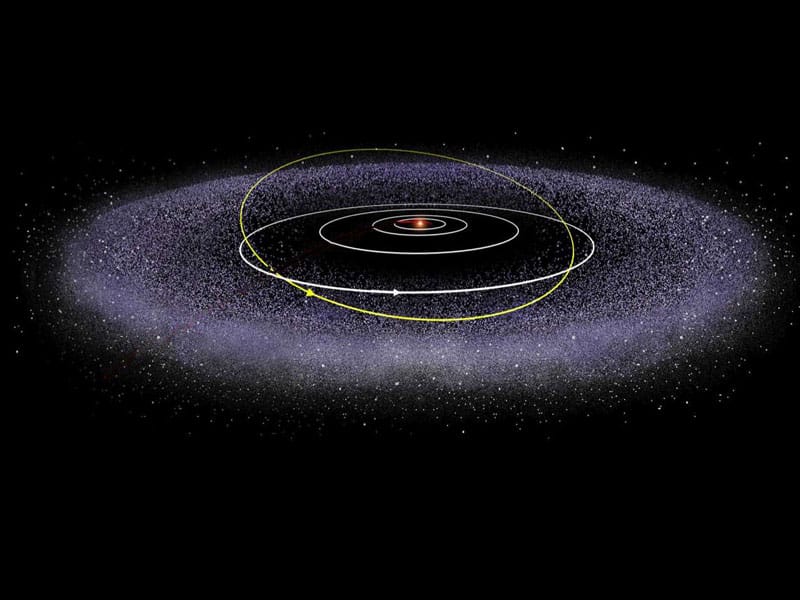
How Long Would it Take to get to the Kuiper Belt?
The first journey made to the Asteroid Belt was made on July 16th, 1972, and it took 135 days. The craft navigated within the Belt and conducted a flyby of Jupiter. However, a trip to the Kuiper Belt might take around a decade.
What are the Three Types of Asteroids?
Chondrites (C-type) are the most common type of asteroids and are made of silicate rocks and clay. They are dark-looking and are the oldest objects in the Solar System.
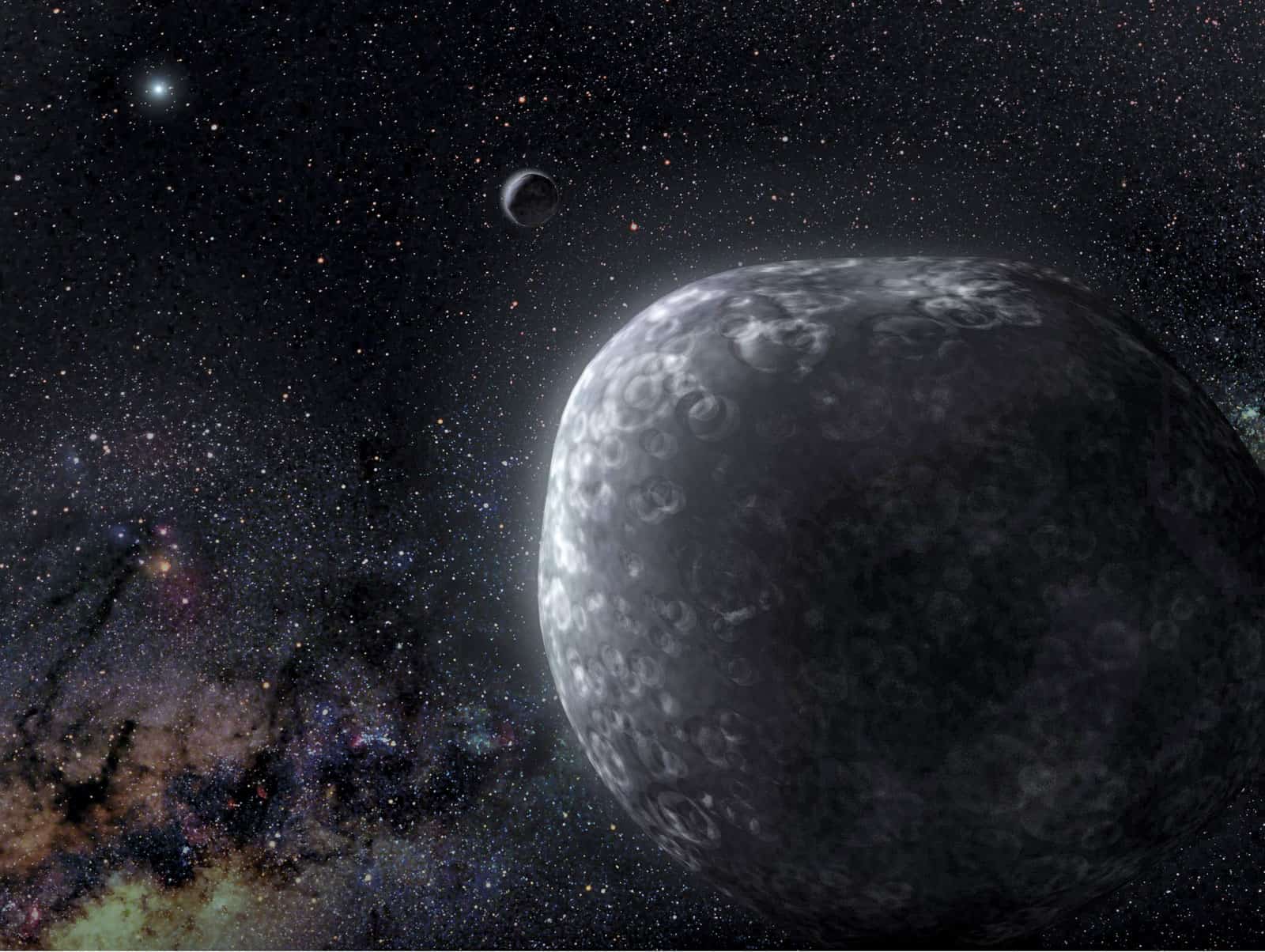
"Stonies" (S-types) asteroids consist of nickel-iron and silicate materials." Nickel-iron" (M-types) asteroids are metallic with iron sinking in the center and pushing lava to the surface. Read here more about asteroid types.
Is the Kuiper Belt Dangerous?
Sixty-five million years ago, a massive asteroid struck the Earth and killed nearly 90% of the animals (and dinosaurs). These impacts rarely occur, meaning the chance of Earth being hit by such a large object is approximately one in 5.000 in a human lifetime. If that happens, we could say it would cause a global disaster.
The Kuiper Belt isn't dangerous to us if we can go there, however, if a large object from there has a collision course set with us, we can consider the Kuiper Belt relatively dangerous.
Other Characteristics of The Kuiper Belt
The majority of the dwarf planets located in the Kuiper Belt have their own moon. It is believed that Haumea, one of the smaller dwarf planets, has its own ring system.
There is no substantial evidence for the origin of the Kuiper Belt. Life could not be sustained on the Kuiper Belt due to low temperatures. Astronomers encourage us to name freshly discovered celestial objects in the Kuiper Belt and in general.
For some unknown reasons, a lot of the Kuiper Belt's mass is missing. It is believed that the Kuiper Belt should have 30 times the mass of Earth, but it doesn't.
Kuiper Belt Notes
- The origin of the Kuiper Belt hasn't yet been determined.
- There are many objects within the Belt, but the most well-known are the three dwarf planets: Pluto, Haumea, and Makemake.
- Gerard Kuiper published a scientific paper in 1951 in which he made believed that there are objects beyond Pluto.
- It is believed that there are over 100 million small items located in the Kuiper Belt, with a diameter of 20 km / 12.4 mi or less.
- The biggest object within the Belt is the dwarf planet Pluto. Pluto is also the biggest dwarf planet, but not the most massive; that would be Eris.
- Astronomers found similar bodies like Kuiper Belt around other stars. They were observed through the Hubble Space Telescope. Discs around the stars HD 138664 in the Lupus constellation and around HD 53143 in the Carina constellation have been observed.
Sources:
Image Sources:
- https://solarsystem.nasa.gov/internal_resources/3253/
- https://spacespecialists.com/wp-content/uploads/2019/01/kuiper-belt-900x444.png
- https://www.universetoday.com/wp-content/uploads/2015/01/Kuipers_revised7-1280x720.jpg
- https://ualr.edu/tv/files/2020/04/KUIPER-BELTOORT-CLOUD.jpg
- https://solarsystem.nasa.gov/system/feature_items/images/96_carousel_kb_4.jpg
- https://cdn.britannica.com/55/145455-050-F18A7914/rendition-artist-object-belt-Kuiper-objects-edge.jpg
